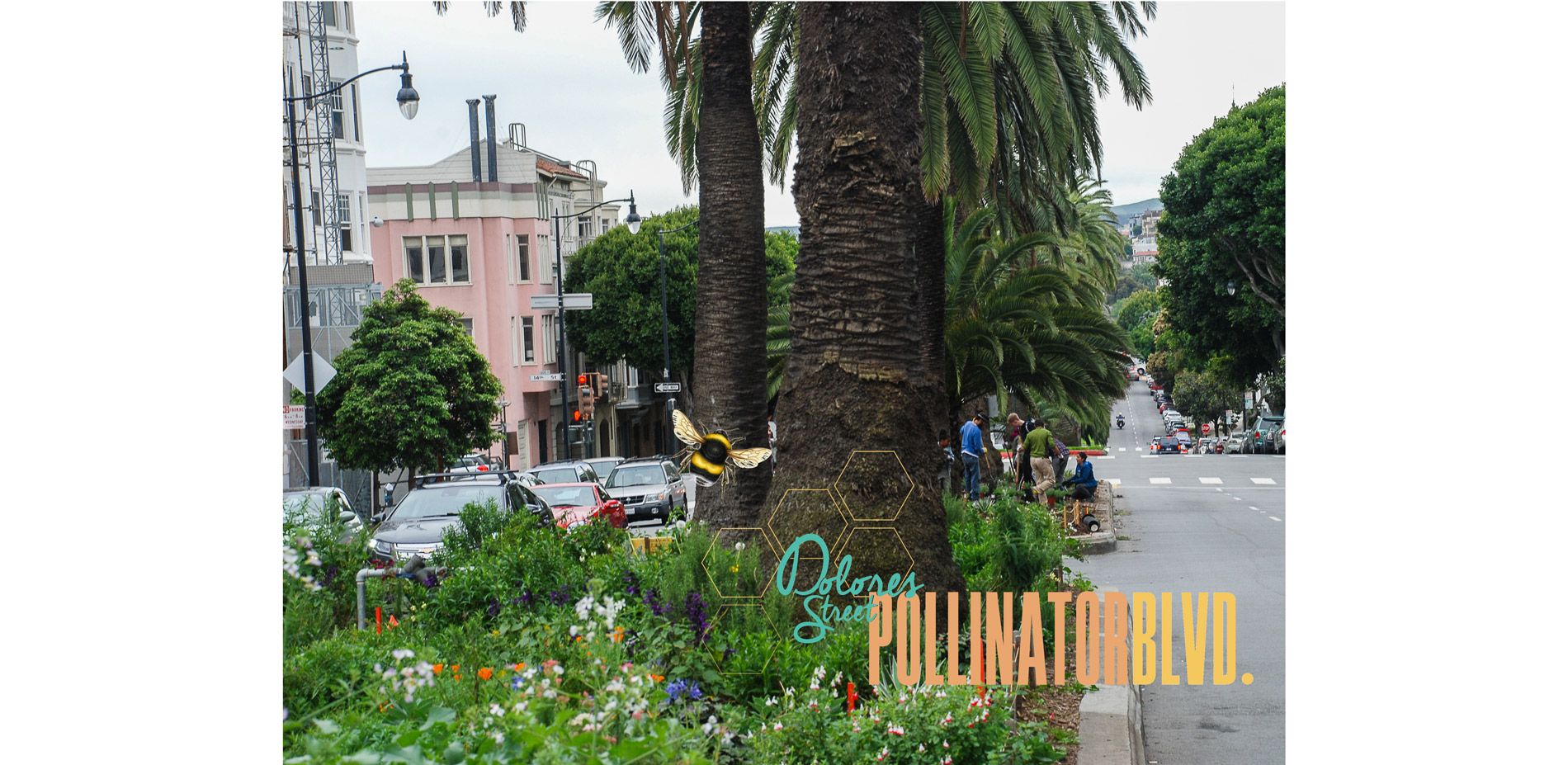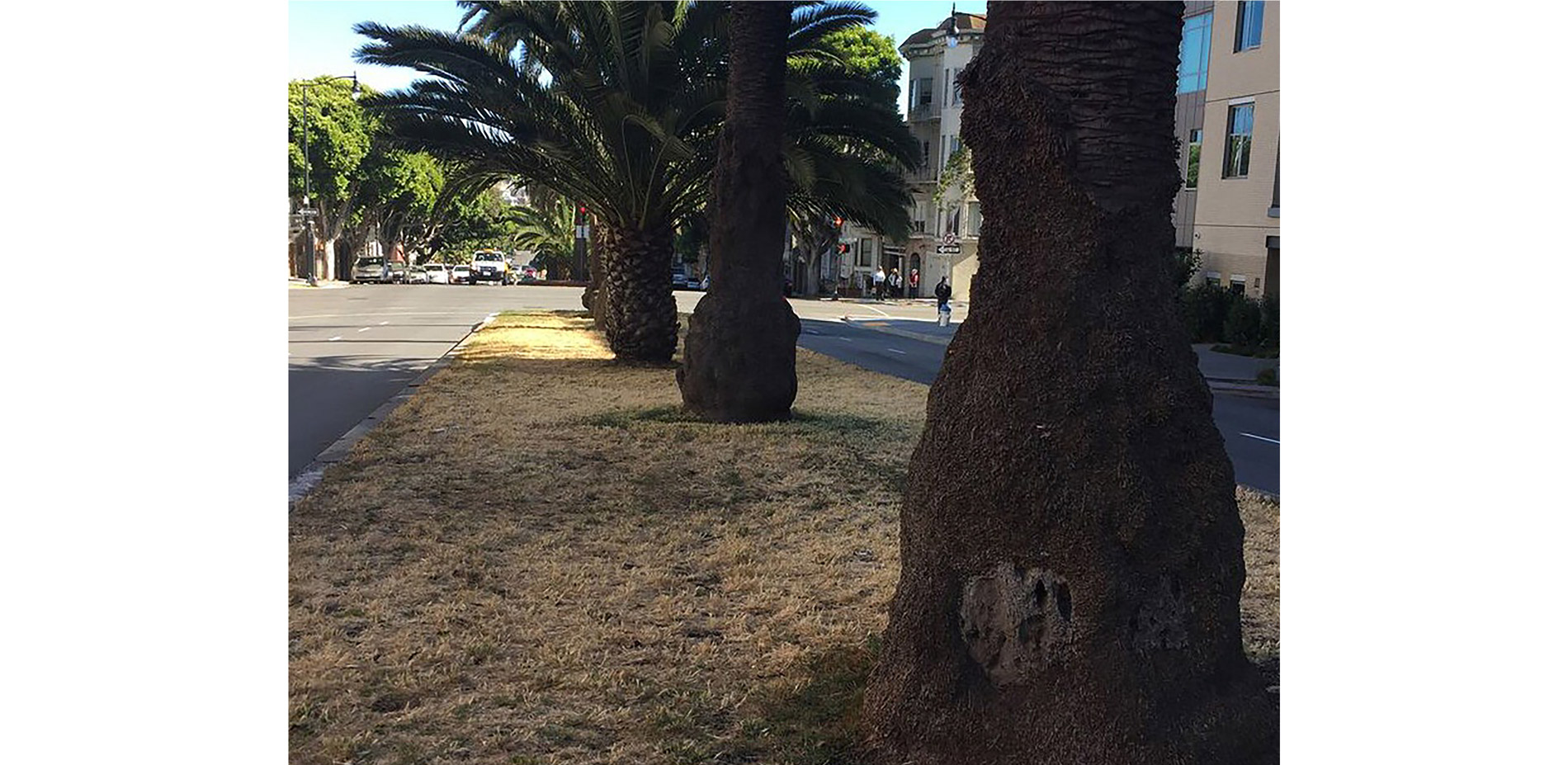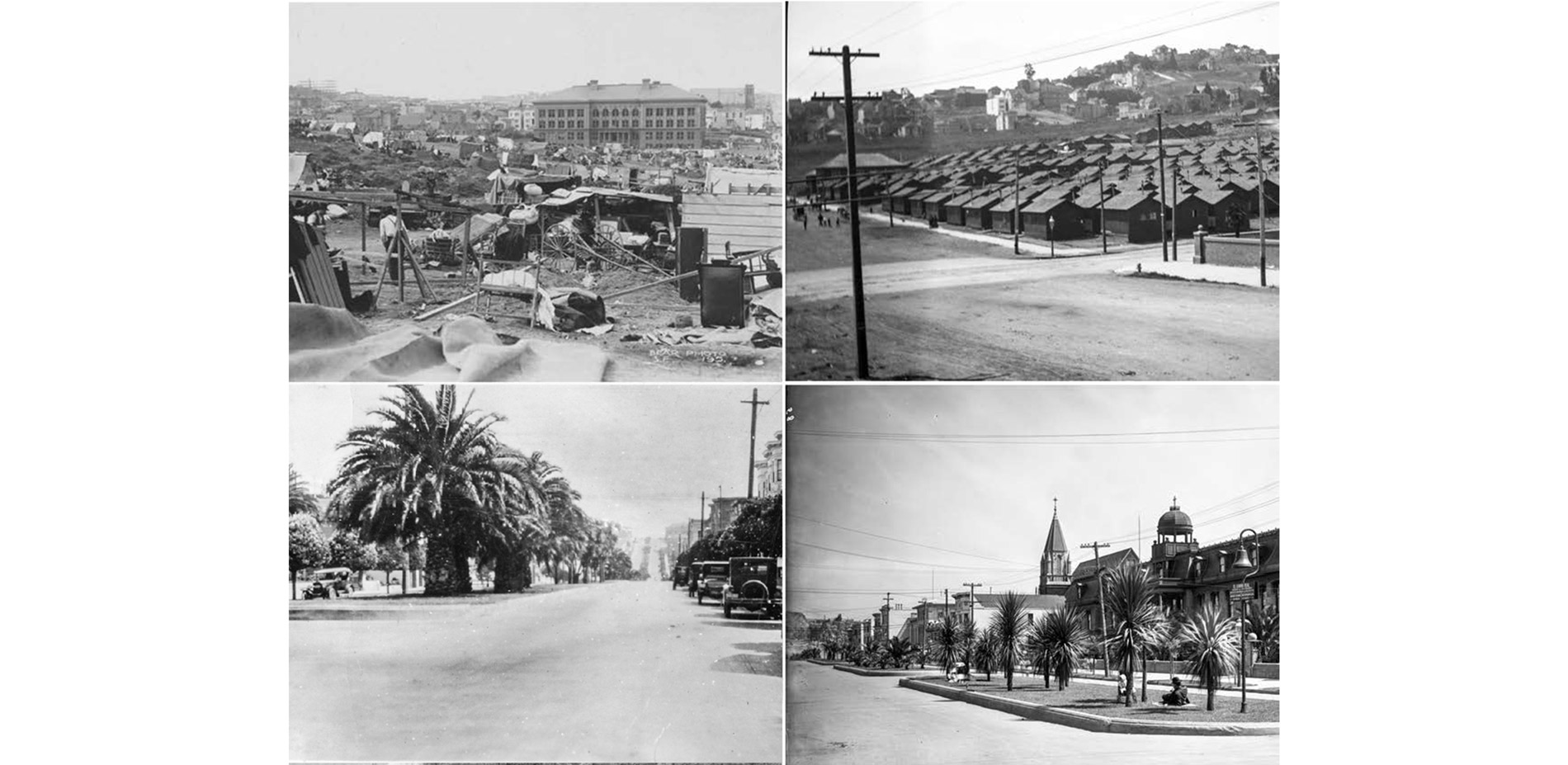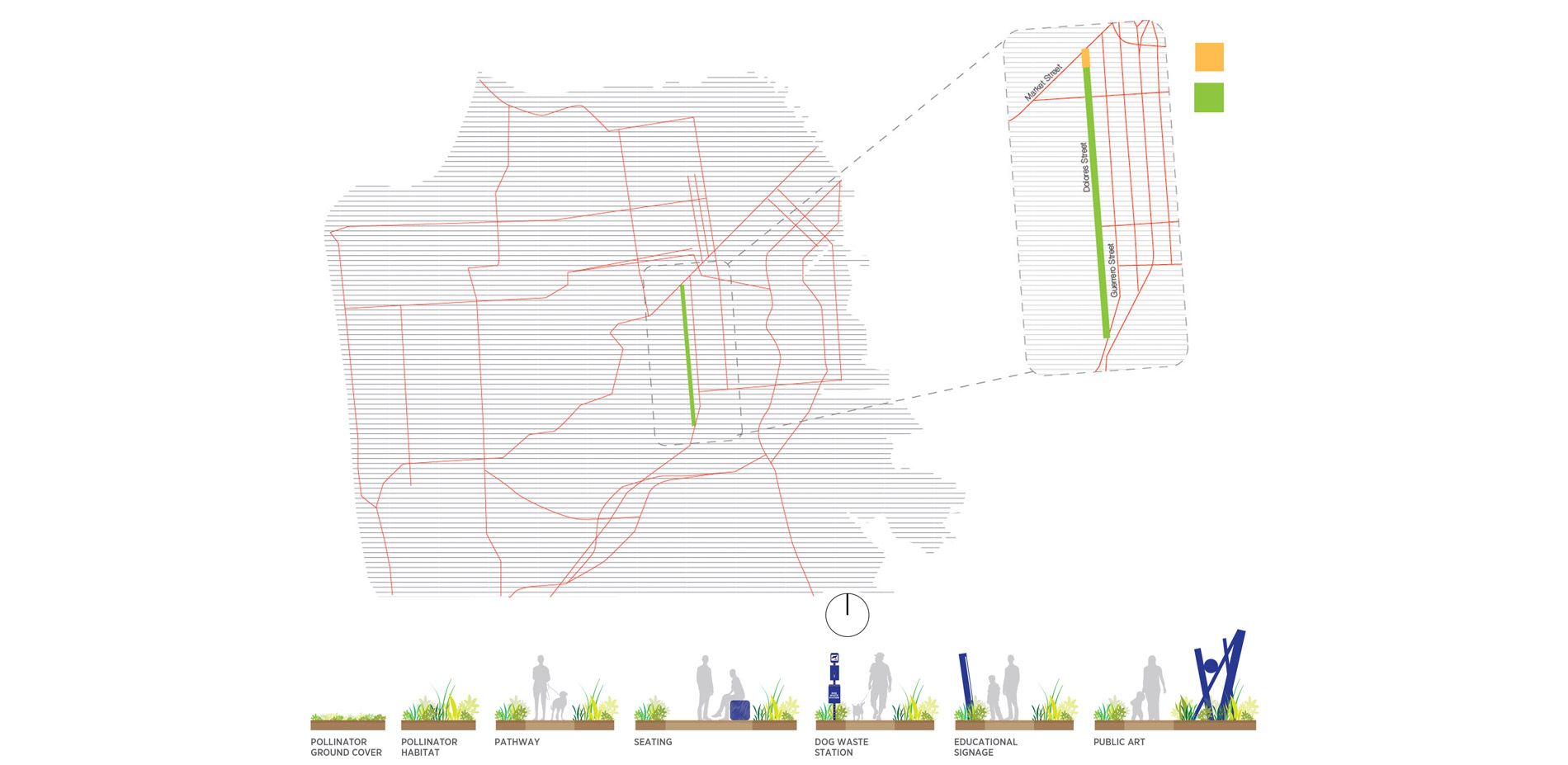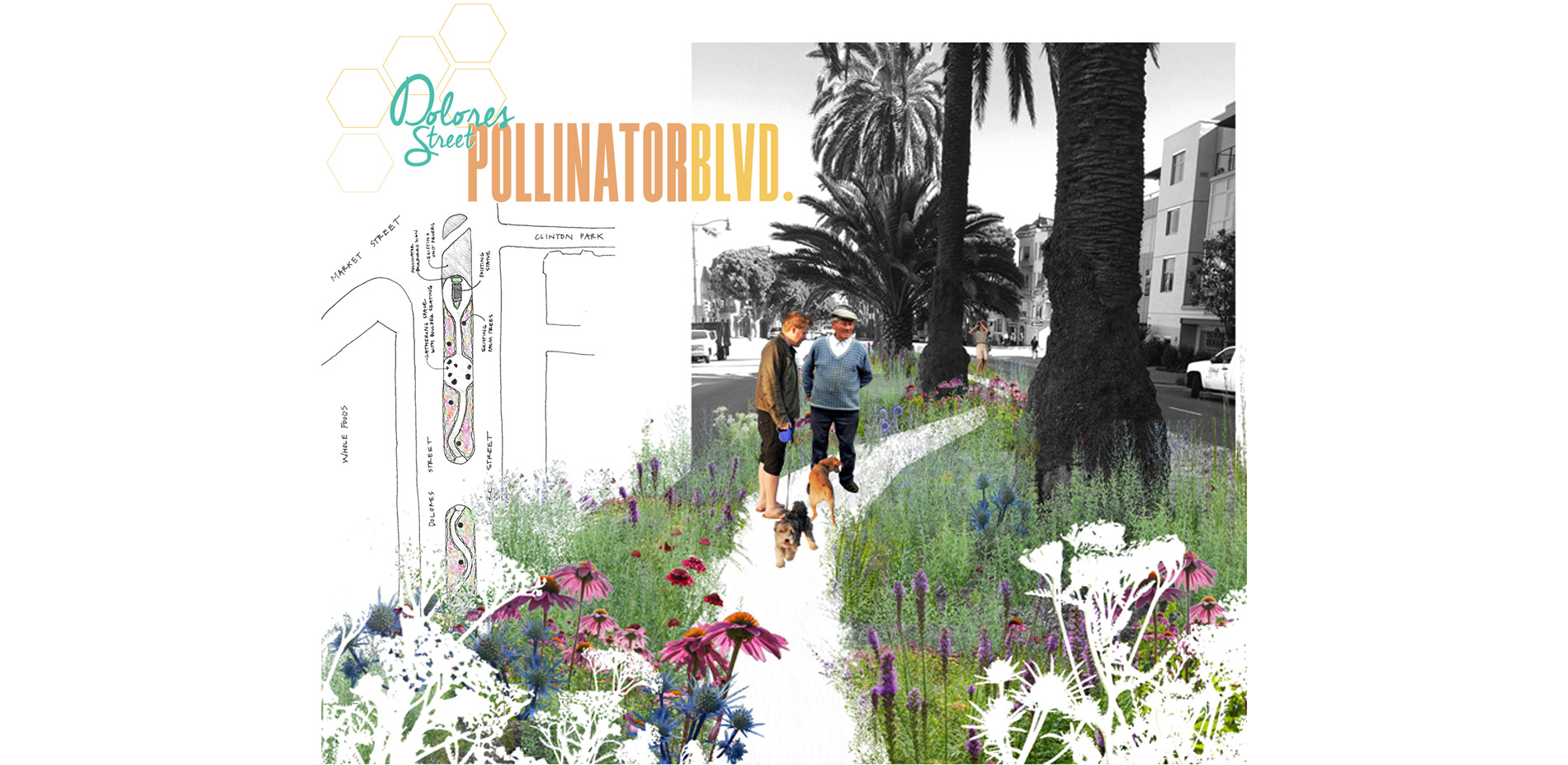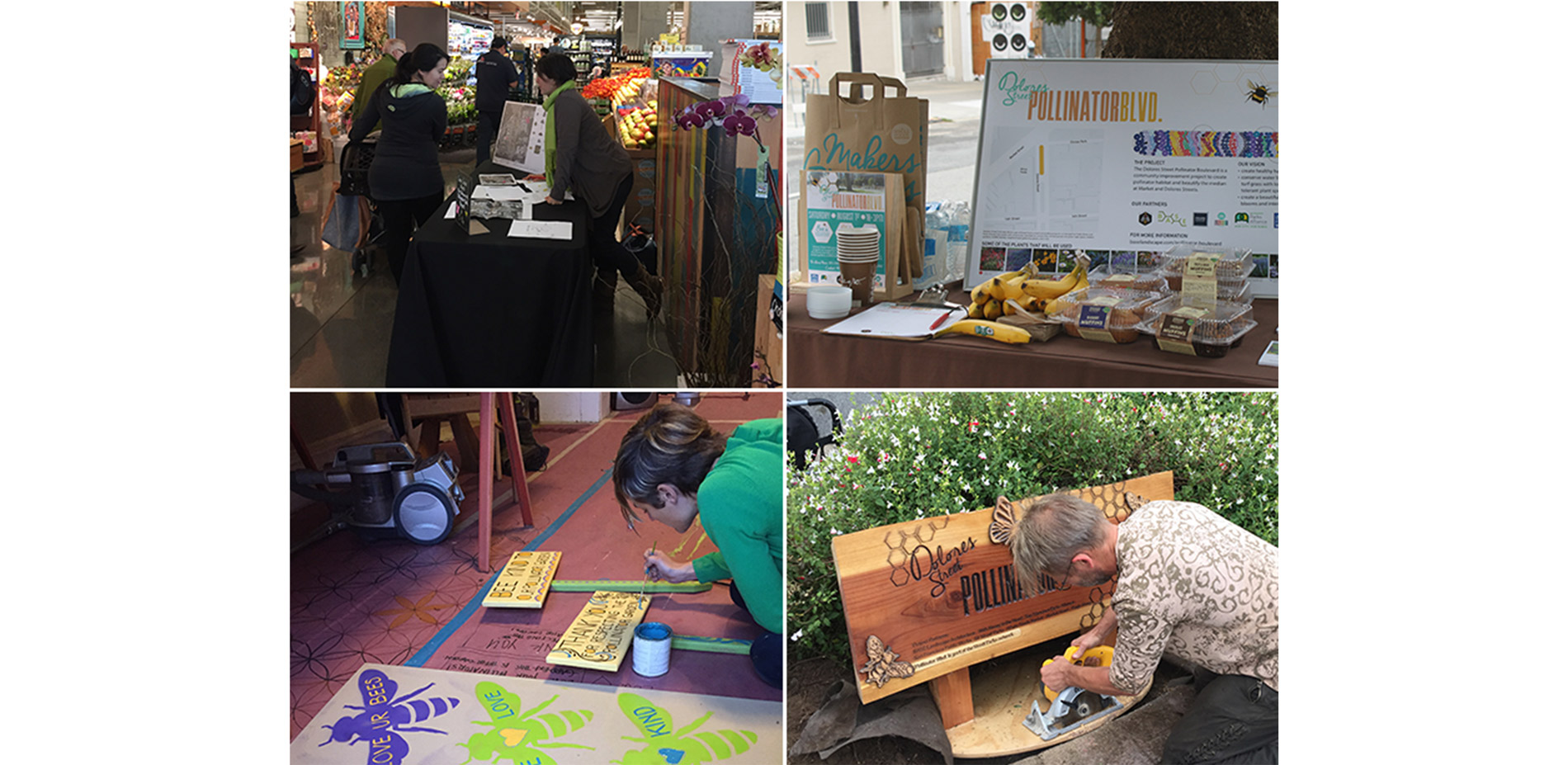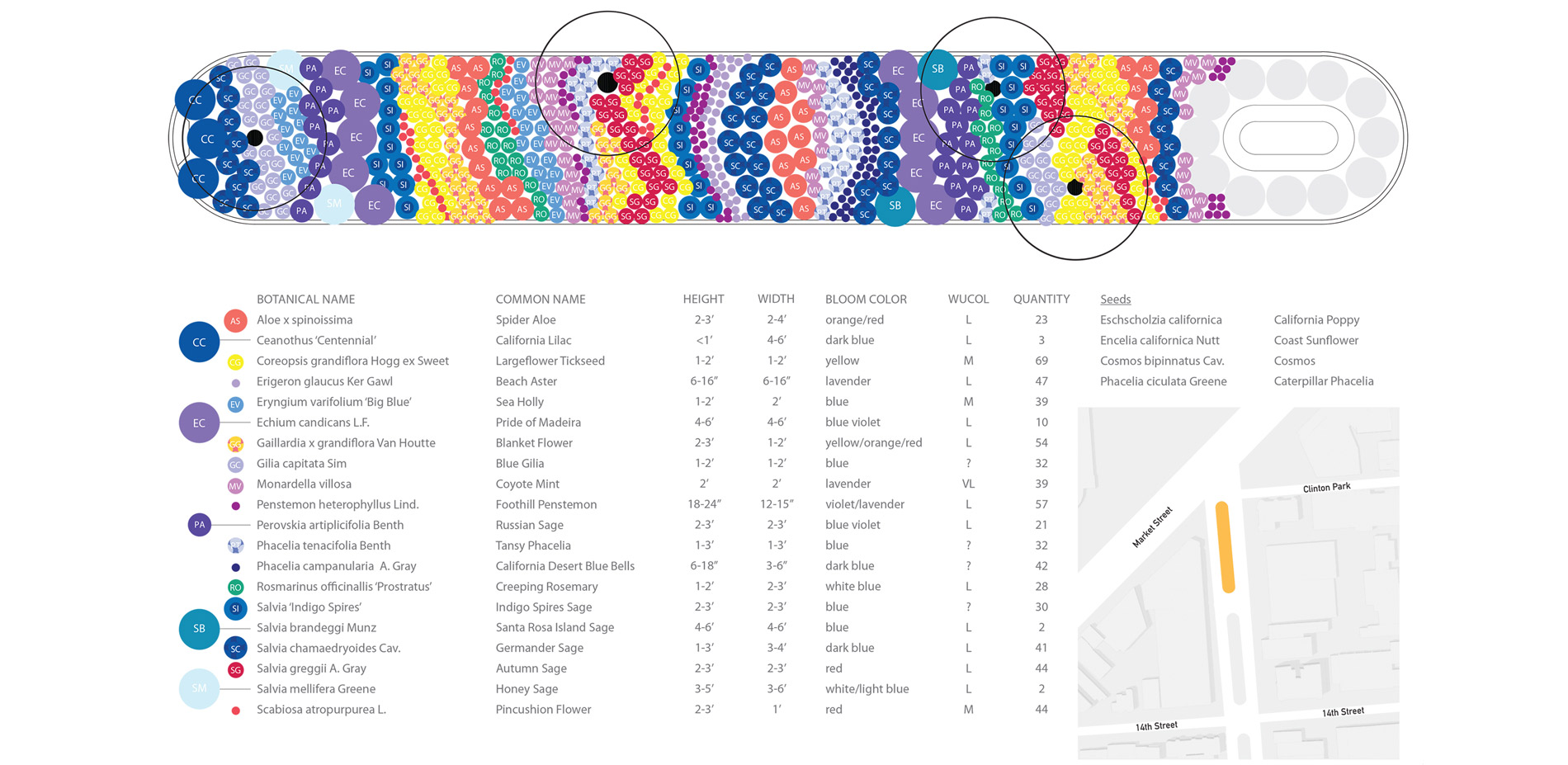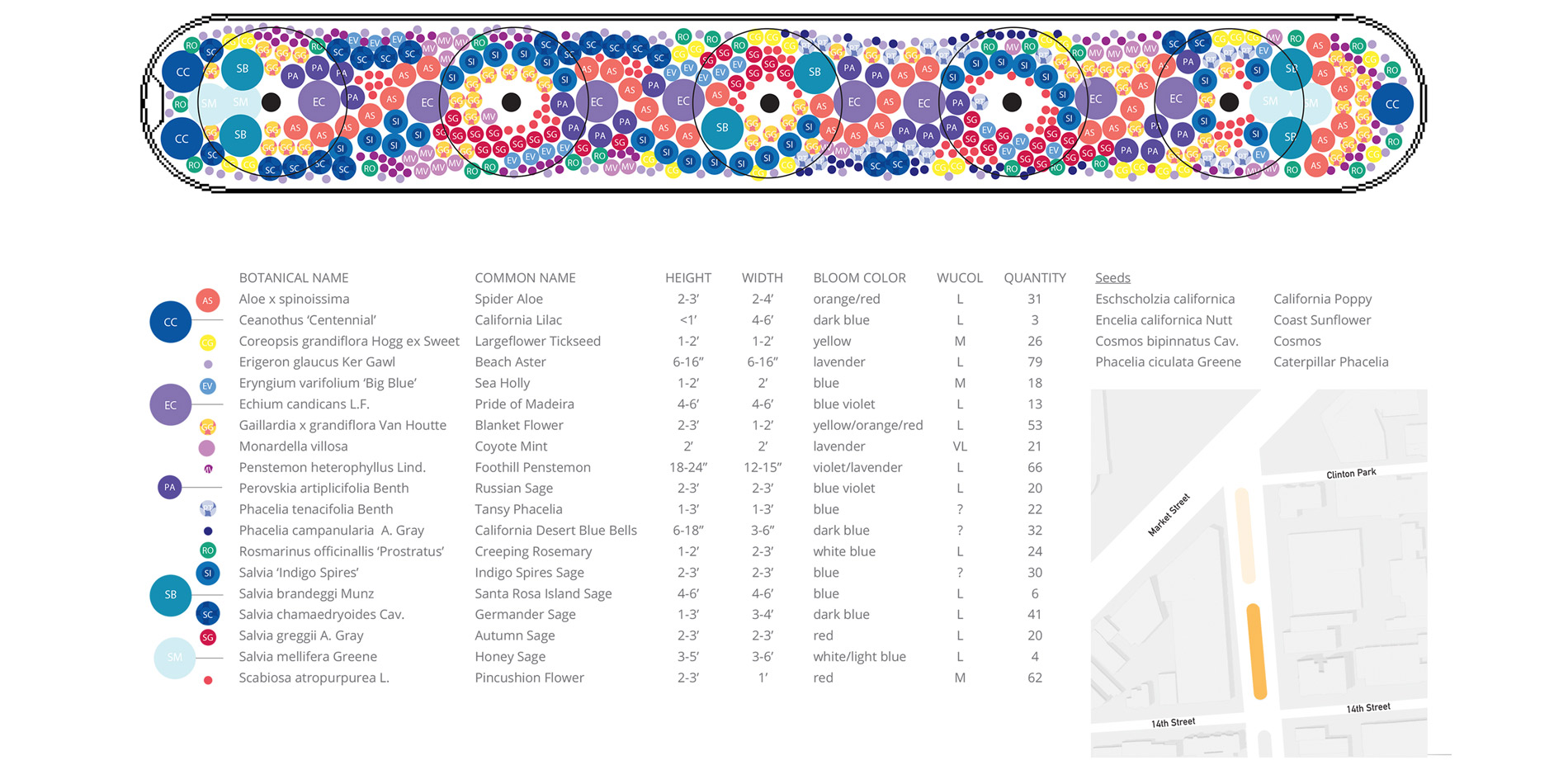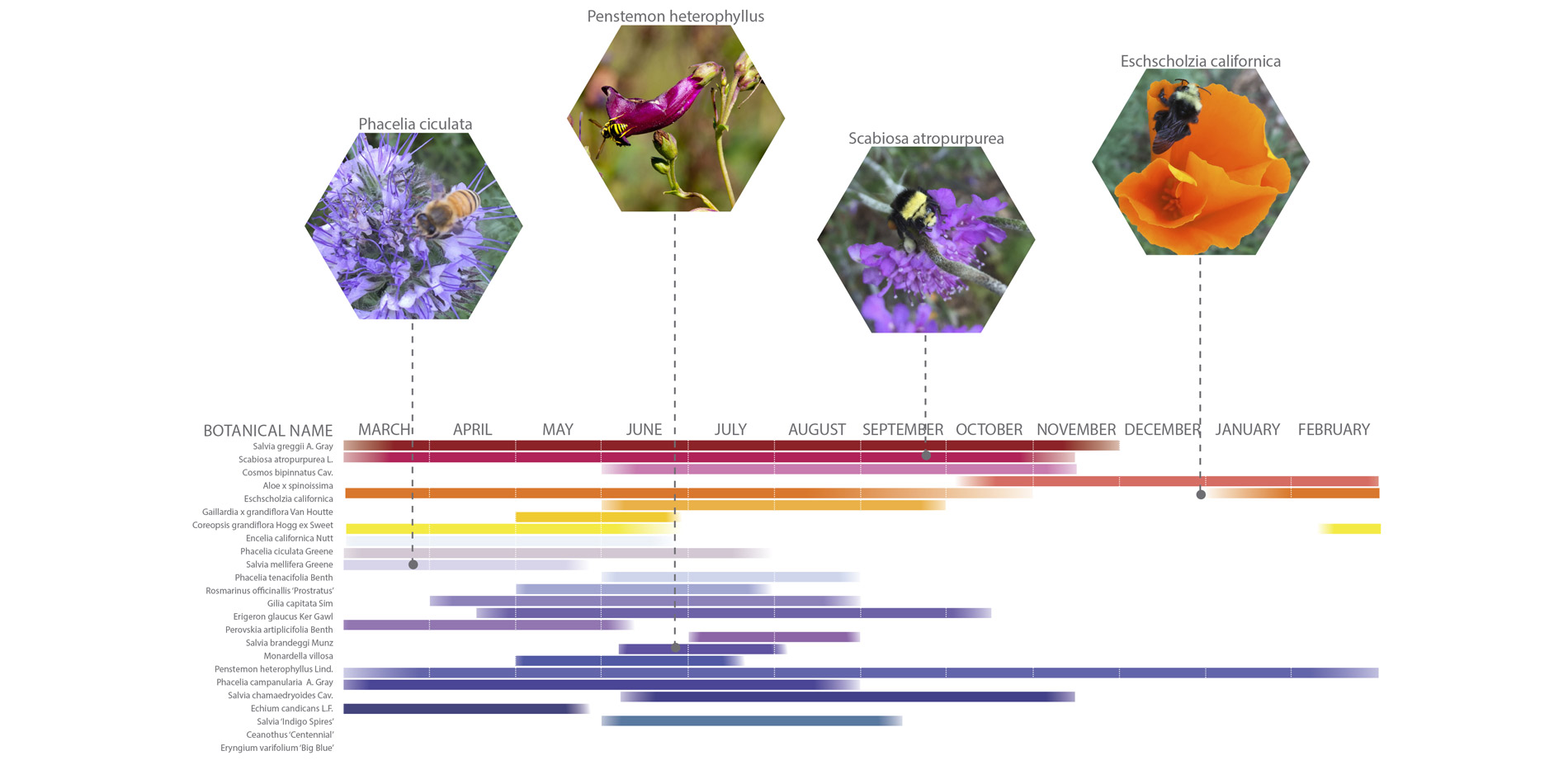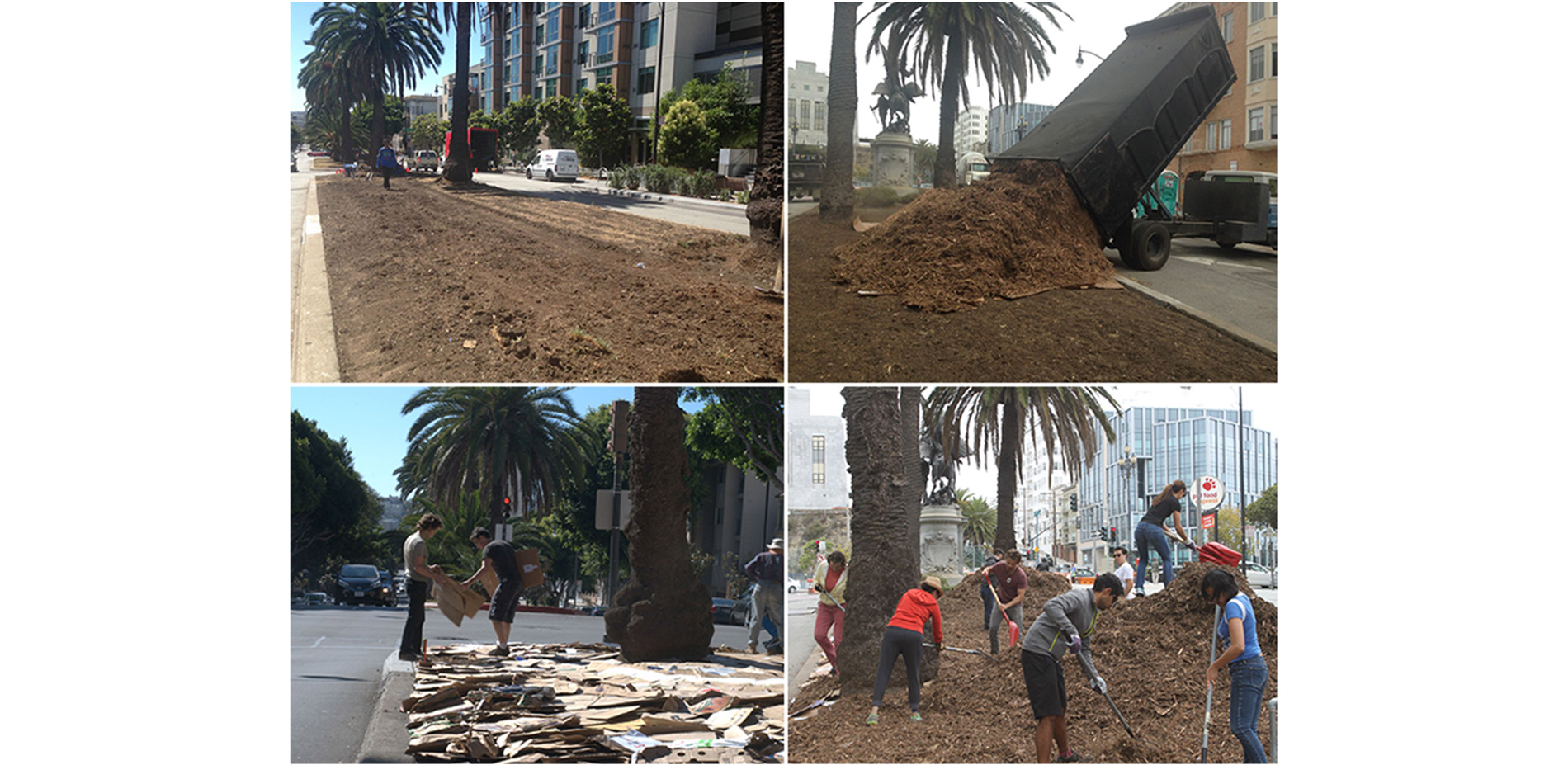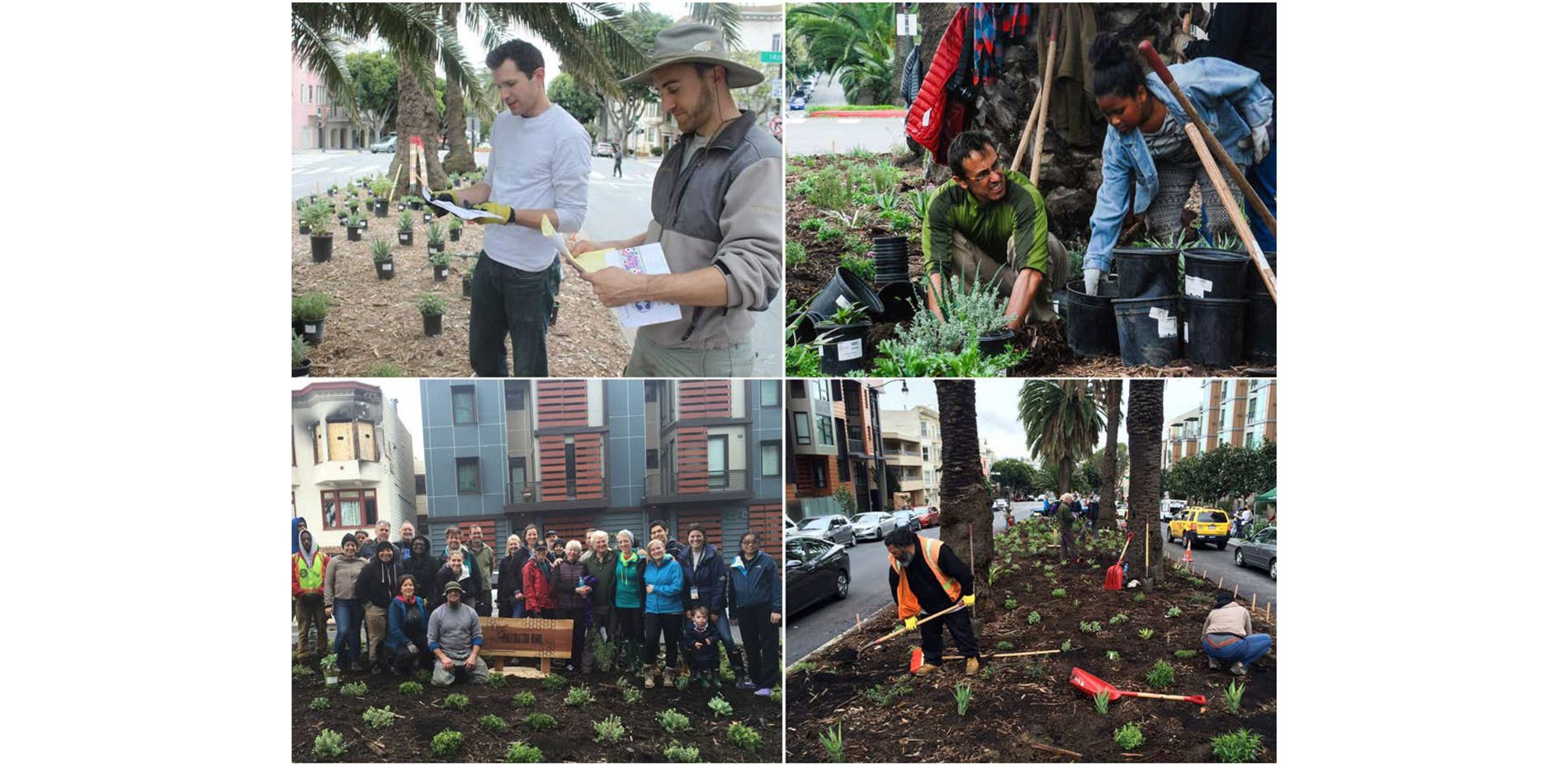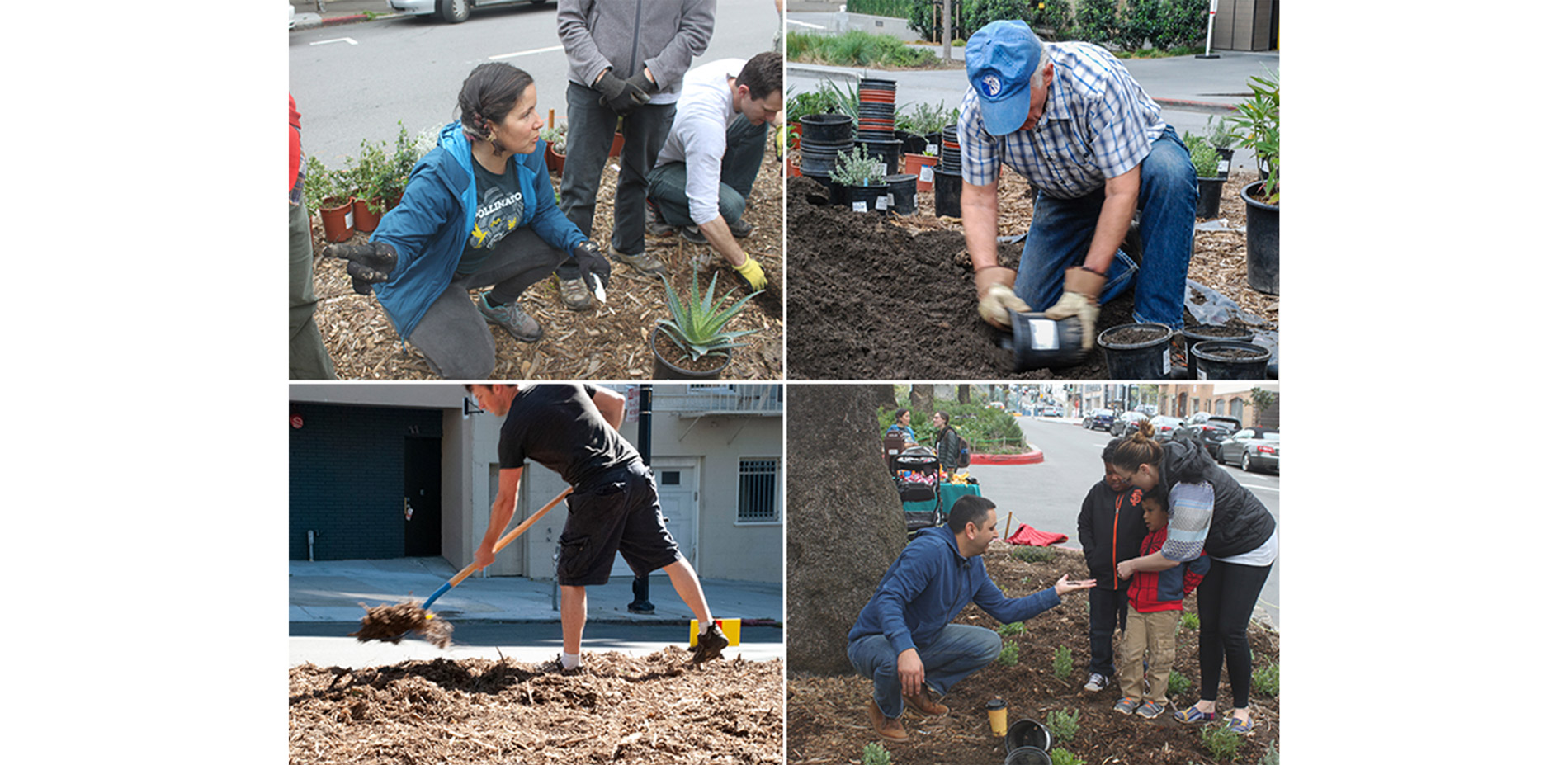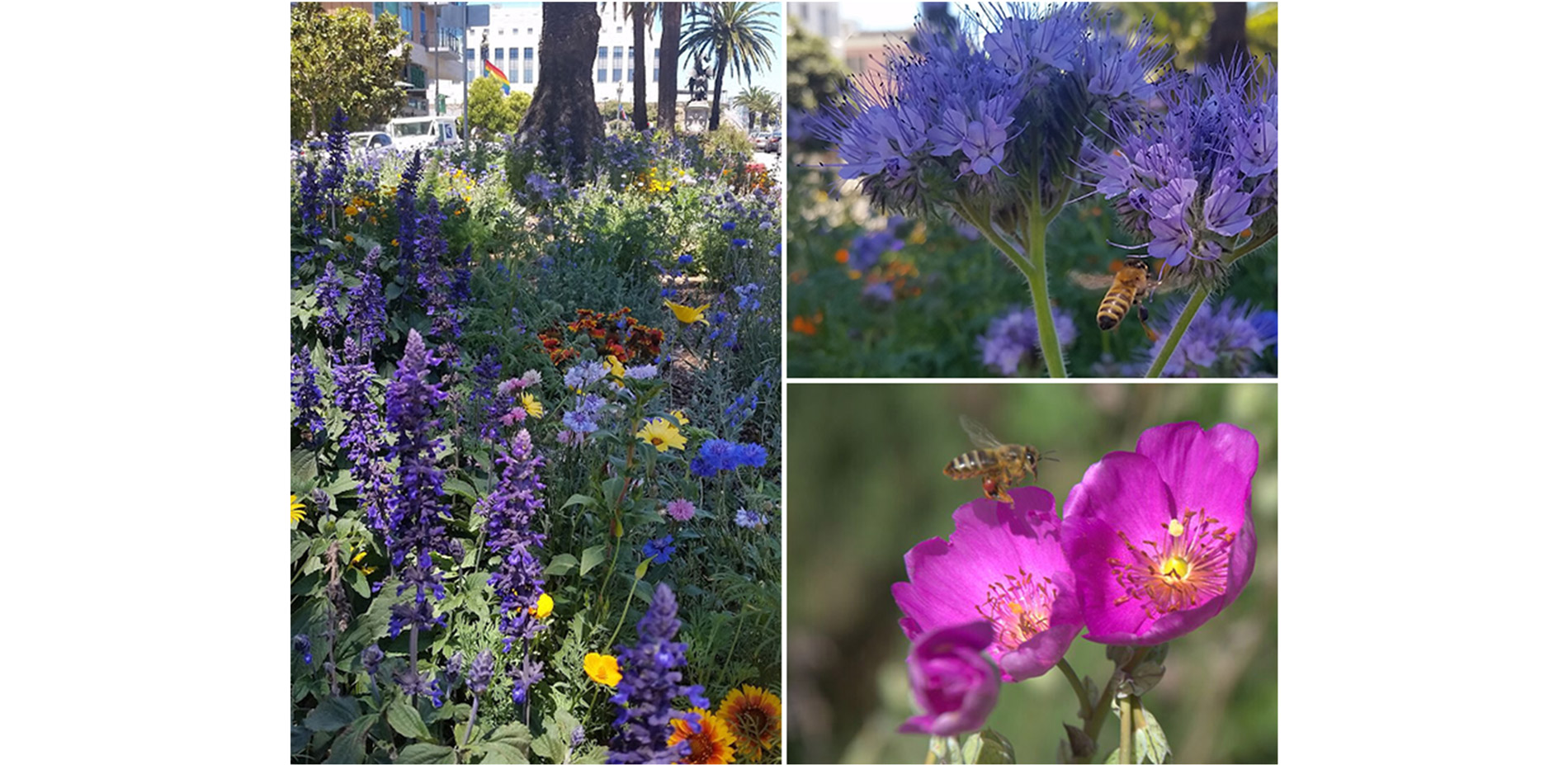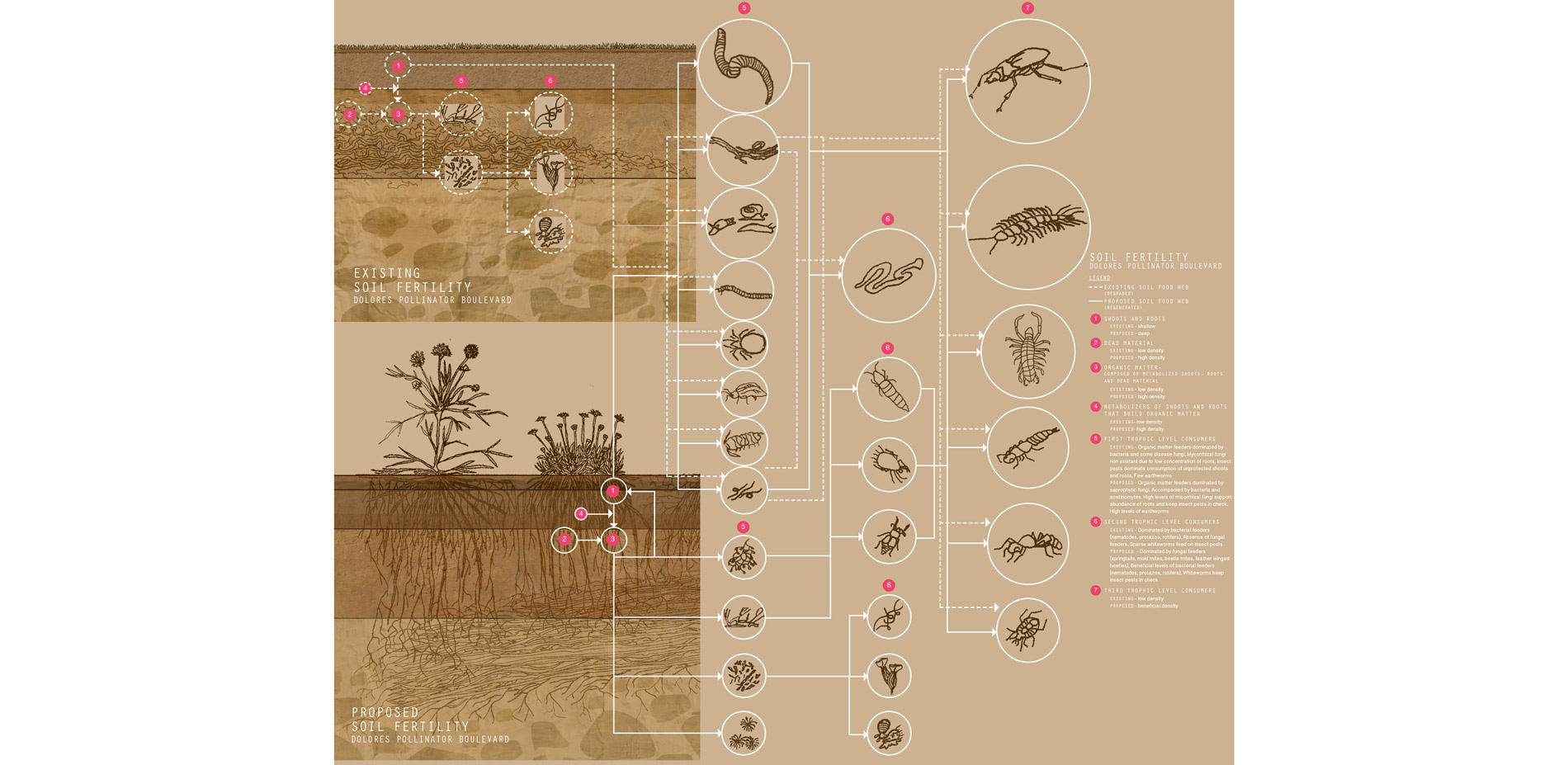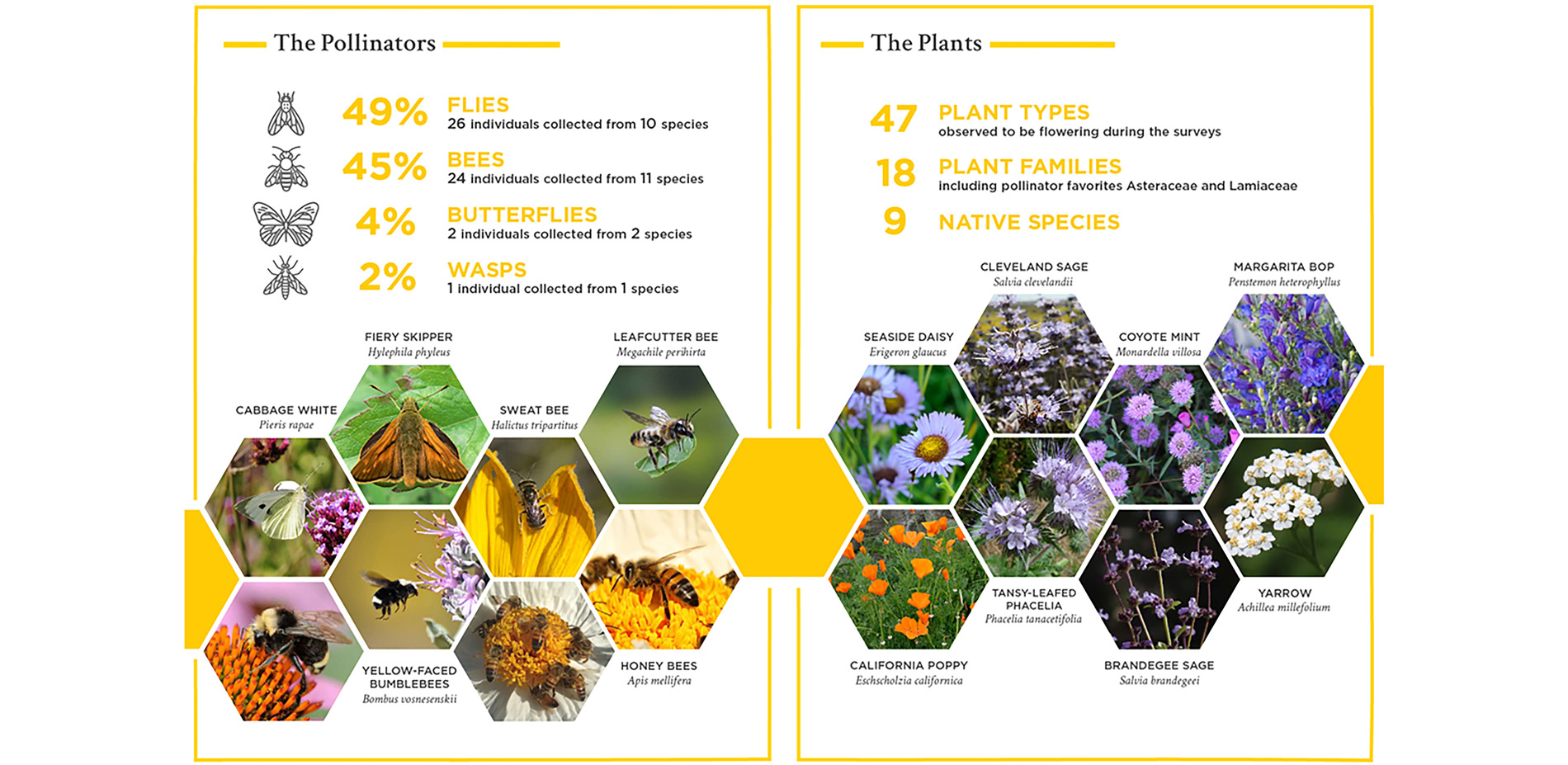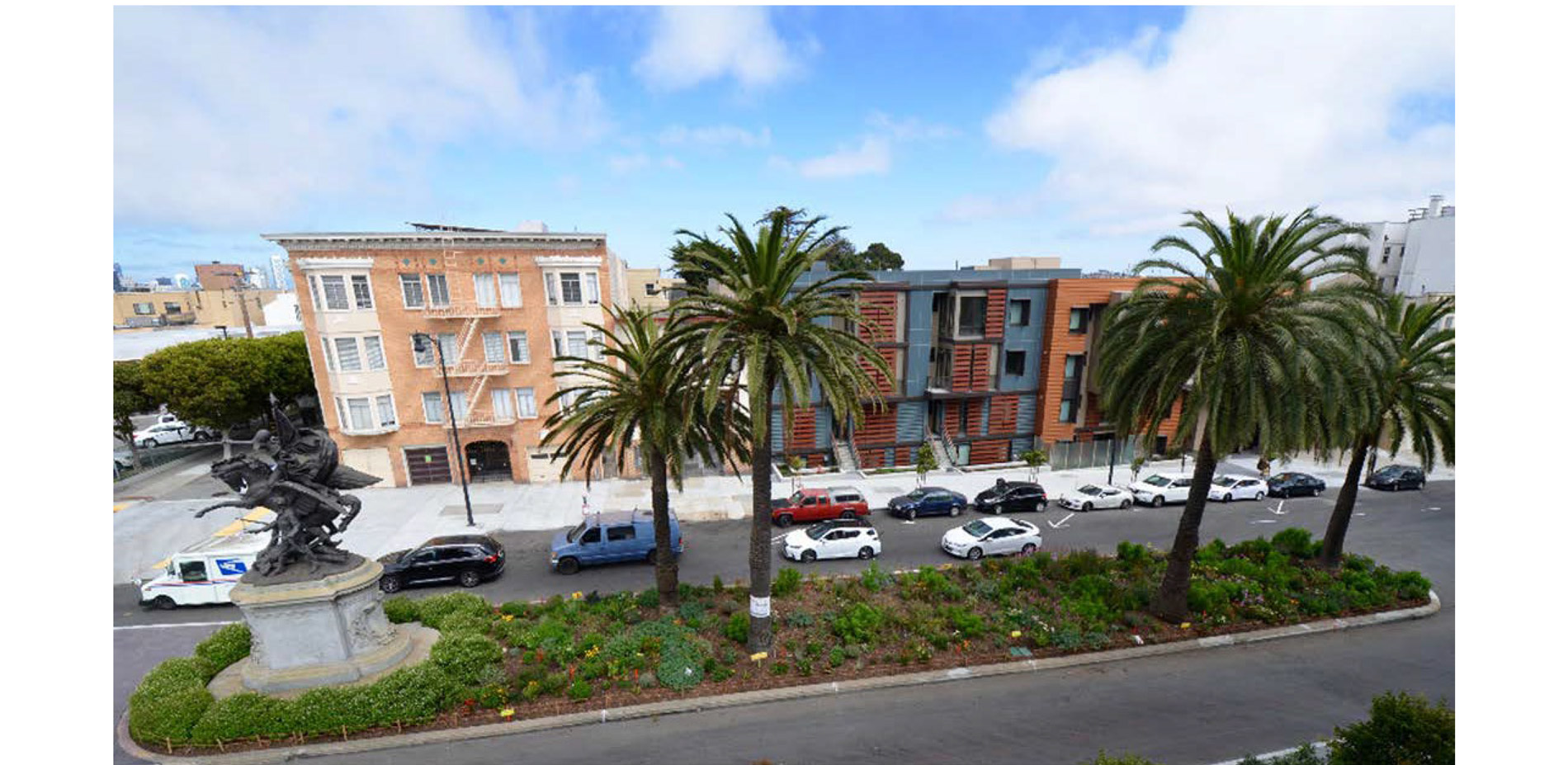Dolores Street Pollinator Boulevard
HONOR AWARD
Student Community Service Award
San Francisco, CA, USA | Team: Julia Prince, Student ASLA; Benjamin Heim, Associate ASLA | Faculty Advisors: Patricia Algara
University of California Berkeley
I do think that when underserved communities have beauty in public space, they feel that there has been an investment in their welfare.
- 2018 Awards Jury
PROJECT CREDITS
- SF Street Parks
- Community Challenge Grant
- San Francisco Department of Public Works
- Edward's Mother Earth Foundation
- Prado Group
- Whole Foods
- Mission Dolores Neighborhood Association
Additional Project Credits
- BASE Landscape Architecture
- Julia Prince
- Patricia Algara
- missiondna.org
- OpenSFHistory
- Natalie Martell
- Benjamin Heim,
- gardening.which.co.uk
- www.instagram.com/bbcnews
- northwestnaturalist.org
- mother-natures-backyard.blogspot.com
- Chad Beecher
PROJECT STATEMENT
The Dolores Street Pollinator Boulevard is an urban resiliency project that creates healthy and diverse ecosystems, cultivates community, and revives the civic values of one of San Francisco's landmark streets. Located in the Mission, an iconic neighborhood that struggles to maintain its identity of refuge and diversity, the Pollinator Boulevard is a ribbon of habitat that redefines street median space in a beautiful and ecologically meaningful way. This highly visible project fosters community building and stewardship for critical habitat and vulnerable species in an underutilized space. By reviving the historic intentions of a splendid landscaped boulevard, islands plagued with brown turf and invasive weeds are replaced with smart pollinator plantings that better reflect the colorful and diverse character of the neighborhood and respond to the ongoing water shortage in California. Via a non-profit, the project mobilizes the voices and actions of local residents, city officials, businesses, educators, scientists and volunteers seeking to find enduring solutions for contemporary urban design challenges.
PROJECT NARRATIVE
Expansion of urban areas has diminished critical habitats resulting in severely limited pockets of resiliency for a collection of diverse and important wildlife that would like to share our cities. The Dolores Street Pollinator Boulevard is prominent, public, and proudly committed to ecological principles, weaving together the needs of the human and pollinator communities alike.
This project re-examines a distinguished roadside attraction fallen victim to drought and neglect and revives historic intentions of beautification and eminence through a ribbon of pollinator plantings better suited for all the local inhabitants. By encouraging healthy and diverse urban ecosystems neighbors, volunteers, city officials, and educators are empowered to practice mindful stewardship and increase pollinator habitat in San Francisco.
The Dolores Street medians are a 1.96 mile span of El Camino Real, a California Historic Landmark route. This route originally connected 21 Spanish Missions over a 600 mile course. Varying in length from a 200 to 500 foot city block and 20 feet wide, the landscaped islands are populated with 199 heritage status, historic palm trees and a dejected turf groundcover.
Their construction is associated with the 1906 earthquake and fire which devastated San Francisco and destroyed the Mission neighborhood. During the rebuilding effort, the idea for the medians was initiated through the agency and organized efforts of local citizen groups who petitioned the city for landscape improvements along the street and the adjoining Mission Dolores Park. The park served 2 years as a refugee camp for 1,600 people made homeless by the fires, cementing its importance as a space of sanctuary to the neighborhood and city. It remains today one of San Francisco's most visited sites attracting up to 10,000 people on a sunny day.
The city, together with the Department of Public Works, gathered appropriations for construction of a landscaped boulevard to run the full length of the street. During their installation, from 1910-1920, the medians became significant anchors for the comprehensive redevelopment of the entire neighborhood.
9 decades later, in October of 2014, after years of drought, we noticed withered brown patches of turf and invasive plants spreading down Dolores Street. The under-maintained grass islands that divide the road are one of the most striking casualties of San Francisco's drought and the result of the city choking their sprinklers in an effort to conserve water. The solution to the deterioration seemed obvious; tear out the thirsty turf and populate the medians with plants that have evolved to thrive under dry conditions. The city discourages pedestrian use of the medians due to traffic concerns, making the spaces opportune for habitat and beautification to coalesce in plain view.
The new idea for the medians took flight when our team approached local businesses to pitch our transforming vision. With their commitment of support toward funding and maintenance contributions, we set up tabling events to share our concept with the public and invite anyone interested in growing our dream to attend a community meeting. After the first meeting, overwhelming local support in the form of signatures and letters leveraged the Department of Public Works to approve the project's initial phase: the first median.
Given the green light from the city, our designers considered input collected at community meetings and collaborated with the Mission Dolores Neighborhood Association to cohere a vision that was in line with Dolores Street's status as a historical landmark. We held four additional community meetings to receive feedback on our design and continue to iterate. Amendments to the original design included ways to protect the median's historic palms, eliminating gathering spaces and arranging plantings so the medians serve pollinators instead of transients, and including a path around the perimeter of the garden so maintenance could be performed a safe distance from traffic.
Planting designs took into account an expectation of limited maintenance. Thus, native plants and those with minimal water needs were used as much as possible. Selections were made based on optimal bloom periods to ensure a continuous flow of nectar as well as hardiness to roadside conditions and overall aesthetic merit. Plants were purchased using funds received from a Community Challenge Grant from the City of San Francisco. Care was taken to source from nurseries that do not treat their plants with systemic pesticides, chemicals that are lethal to pollinators. A local carpenter and artist made a beautiful sign to mark the entrance of the Boulevard and raise awareness to passersby.
From there out, we developed a framework and simple phasing process that can be replicated as we continue to extend the gardens down the street. The phasing begins with the removal of existing turf, followed by sheet mulching. This is a permaculture technique used to suppress weeds and build soil health, which involves laying down thick layers of recycled cardboard topped with one foot of organic mulch. After a minimal 6 month decomposition period, the planting design can be installed directly into the newly amended soil with ease by crews of local volunteers on organized workdays.
Since transforming the first two medians, support for the project has grown. Dolores Street's residents whose home gardens have been reaping the benefits of more beneficial wildlife, nominated the Pollinator Boulevard for the 45th annual Beautification Award from San Francisco Beautiful; it won. The project also significantly contributed to a nomination by a coalition of city agencies and the Department of Environment to add San Francisco to the national Bee City USA network which reduces pesticide use and restores natural habitats on city properties. And most recently, a neighbor submitted the project for the District 8 participatory budget funding under the Open Space category to expand the gardens.
The improvements brought about by the Pollinator Boulevard have been confirmed not only anecdotally, but also in rigorous studies of soil conditions and pollinator counts. In May of 2017, soil samples were collected from the first median, which had been planted one year prior, the second median, which had been sheet-mulched six months prior, and the third median which had not been worked on at all by our team. The results we received from the lab showed that organic matter content was at significantly higher levels on the planted medians than those untouched. Additionally, pollinator surveys focusing on native bees but also accounting for butterflies, flies, and wasps, were conducted by a UC Berkeley entomology specialist in the Spring, Summer, and Fall of 2017. Using pan trapping and net collection methods, we found 11 native bee species and other pollinators visiting the gardens throughout the year compared with one bee on an adjacent turf median. Hummingbirds and other bird species have been observed on every site visit.
Working with specialists has enlightened us on ways to improve our gardens and make them more effective at bringing pollinators to the area. One of the main conclusions is that the Pollinator Boulevard is still a somewhat isolated patch of habitat and could be much more effective as a wildlife corridor if extended beyond the first two medians and down the full length of Dolores Street.
Looking back on the history of this iconic neighborhood inspires the spirit of resiliency in our vision as landscape architects. The Pollinator Boulevard engages continual support from the community while fortifying a partnership with the larger forces of nature. As big cities struggle to maintain health and vibrancy, sustainable, ecological design solutions like the Pollinator Boulevard contribute a beneficial and colorful change to one of America's most unique places.
